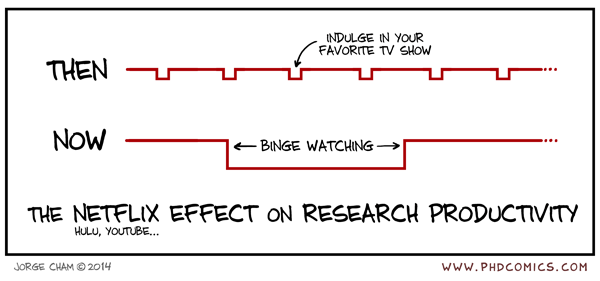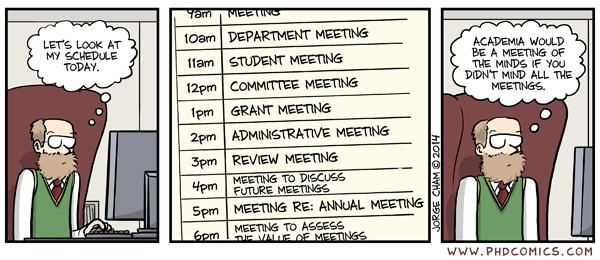Klinisk institutt 2 har et stort utvalg av både avansert og mindre avansert vitenskapelig utstyr. Offisielt tilhører alt utstyr som er tilgjengelig ved instituttet universitetet som helhet. Alle er velkommen til å bruke utstyret, men vi bør være vaktsom i…
Month: October 2014
Minneord om Claus Ola Solberg Obituary: Claus Ola Solberg
Vår kjære kollega og venn Professor emeritus og tidligere dekanus, instituttleder og avdelingsoverlege Claus Ola Solberg døde i sitt hjem i Fana 20. oktober 83 år gammel. Han begraves fra Fana kirke i dag fredag 31. oktober kl 12. Alle…
Midtveisevalueringer uke 45Midway evaluations week 45
Knut Anders Mosevoll Torsdag 6. november, kl. 12:45-13:45 For mer informasjon Rune Rose Tronstad Fredag 7. november, kl. 10:00-11:00 For mer infomasjon Begge evalueringene finner sted i seminarrommet i 7 etasje, Lab-byggetKnut Anders Mosevoll Thursday November 6, at 12:45-13:45 For…
HMS runder på K2 desember 2014HSE inspections at K2 December 2014
HMS-runde er en fysisk gjennomgang av lokaler, utstyr og arbeidsmetoder for å kartlegge fare for sykdom og skade på personell, miljø og materiell og vurdere behov for tiltak. Forhold som har betydning for brannvern og ytre miljø (t.d. farlig avfall…
Faglig-pedagogisk dag 6. februar 2015Academic-pedagogical day February 6, 2015
Kontor for etter- og vidareutdanning inviterer alle fagmiljøa ved UiB til å kome med forslag til innlegg på fagdagen. Innlegga kan ha form som ei ordinær forelesing på ein til to undervisningstimar, men fagmiljøa kan òg velje å sette saman…
Nyhetsbrev fra organisasjonsutviklingsprosjektet ved UIB Newsletter from the organizational development project at UiB
Universitetet i Bergen har satt i gang et organisasjonsutviklingsprosjekt for å utvikle de sentraladministrative tjenestene, og har som abisjon at alle ansatte skal ha god kjennskap til prosjektet. Prosjektets nettsider utgjør en hovedkanal for informasjon til ansatte. I tillegg er…
Vis frem dine forskningspresentasjoner fra 2014Reasearch presentations from 2014
Forskerskolen i klinisk medisin inviterer deg til å vise frem dine forskningspresentasjoner som er holdt eller skal holdes på kongresser og møter i 2014. Det vil bli posterutstilling i Vestibylen på Haukeland Universitetssykehus 26.-30.01.15, og muntlige presentasjoner 29.01.15. De beste…
Styrer vi systemet eller er vi dets slaver? – noen tanker i forkant av HMS-seminaretAre we in control of the system, or are we its slaves? – some thoughts prior to the Health-Safety –Environment (HSE) seminar
Neste uke arrangeres K2 sitt HMS seminar, forhåpentligvis kommer du dit for å lære om samarbeid og arbeidsglede – viktige faktorer for at K2 skal være en god arbeidsplass. Jeg holder akkurat nå på å lese Sapiens – a Brief…
Erasmusseminaret 2014Erasmus seminar 2014
Erasmusseminaret 2014, arrangert av Senter for internasjonalisering av utdanning (SIU), finner sted i Ålesund 1. og 2. desember. Påmeldingsfrist er 7. november. For mer informasjonThe Erasmus seminar 2014 will take place in Ålesund 1th and 2nd of desember, Registration deadline…
Utlysning av kortidsstipend (3mnd) i geriatri og demens Announcement of short-term grant (3 months) in geriatrics and dementia
Kavli forskningssenter utlyser kortidsstipend i geriatri og demens, fortrinnsvis til forberedelse av doktorgrads- eller postdoktorprosjekt. Søknadsfrist 10.11.14. For mer infomasjonKavli Research Center is announcing short-term grants in geriatrics and dementia, primarily aimed at the preparation of PhD- or postdoc projects.…
DISPUTASER UKE 44PUBLIC DEFENCES WEEK 44
Grete Slettom disputerer for Ph.D graden mandag 27. oktober 2014. Prøveforelesning: Mandag 27. oktober 2014 kl. 10:30 Oppgitt emne: «Treatment of acute myocardial infarction. How could patient outcome be further improved?» Disputas: Mandag 27. oktober 2014 kl. 12:15 Sted: Aud.…
Nye publikasjonerNew Publications
Uke 43/2014. Week 43/2014.
Ukens PhD ComicsThis Week’s PhD Comics
Norsk nobelpris i medisinNorwegian Nobel Prize Physiology or Medicine
6. oktober fikk vi den meldingen at ekteparet Moser ved NTNU sammen med den Britiske nevrobiologen John O’Keefe var vinnere av årets nobelpris i fysiologi eller medisin – en fabelaktig bragd av målrettede og innovative forskere. I en artikkel På…
Påminnelse! Husk å melde deg på HMS dagen Reminder! HSE Day – program and registration
På grunn av få påmeldte er fristen utsatt til 22. oktober. Seminaret er obligatorisk for alle ansatte ved K2. Da er programmet for HMS dagen klart. Det blir en spennende dag med variert og innholdsrikt program. Tid og sted: 5.…
Støy i korridorene – 8. etasje, Lab-byggetNoise in the hallways- 8th floor, Lab-building
Vi har blitt informert av stipendiatene som sitter i det åpne landskapet i 8 etasje i Laboratoriebygget at det ofte er vanskelig for dem å konsentrere seg grunnet støy i korridorene. Vi anmoder derfor alle om å ta hensyn til…
Flowcytometriseminar Flow-seminar
Kjernefasiliteten for flowcytometri inviterer alle interesserte til et seminar om «CyTOF Mass Cytometer». For mer informasjo klikk her. Tid: Torsdag 23 oktober, kl 12-14 Sted: Laboratoriebygget HUS, 9. etasje, seminarrommet The core facility for flow cytometry invites everyone interested to…
Forskningspolitisk seminar 2014Seminar on Research Politics 2014
Forskerforbundet inviterer til forskningspolitisk seminar. Tittelen på årets seminar er «Jo større, jo bedre? Struktur og kvalitet i utdannings- og forskningssektoren».For mer informasjon klikk her. Påmeldingsskjema. Tid: Mandag 3. november, kl 0930-1530 Sted: Hotell Bristol, Oslo The Norwegian Association of Researchers…
Nye publikasjonerNew Publications
Uke 42/2014. Sex differences in cardiovascular outcome during progression of aortic valve stenosis. Cramariuc D, Rogge BP, Lønnebakken MT, Boman K, Bahlmann E, Gohlke-Bärwolf C, Chambers JB, Pedersen TR, Gerdts E. Heart. 2014 Oct 9. PMID: 25301859 Basert på siste…
Ukens PhD ComicsThis Week’s PhD Comics
Nye publikasjonerNew Publications
Uke 41/2014. Week 41/2014.
Ferdighetstrening i medisinerstudietSkill training in the medicine curriculum
Det er elgjakt og skolens høstferie, og praktiske ferdigheter kommer antakelig til nytte i begge sammenhenger. Også i profesjonsutdanningen medisin er det viktig med trening av praktisering av ferdigheter. Mange av disse kunne tidligere læres under turnustjenesten, men må nå…
Velkommen til gjesteforelesning om utvikling av kreftmedisinerWelcome to a guest lecture in cancer drug development
Foreleser: Assoc. Professor Yousef Najajreh, Al-Quds University, East Jerusalem Tittel: Design, Synthesis, and Biological Evaluation of Pyrimidine and Pyrazine. Derivatives for Modulation of Kinase Activity Vert: Professor Bjørn Tore Gjertsen, K2 Sted: BBB, Auditorium 4 Tid: Tirsdag 14. oktober, kl…
Miniseminar om prosjekter for mutasjonsanalyser av sarkomsvulster som utgangspunkt for individualisert behandling.Miniseminar on projects for mutation analyses of sarcoma as starting point for individualized treatment
NCGC (National Cancer Genetics Consortium, ledet av Ola Myklebost) samarbeider med klinikere for å kartlegge mutasjoner og molekylærbiologiske mekanismer som kan danne utgangspunkt for individualisert målrettet behandling ved ulike tumortyper. En nasjonal kartlegging av mutasjoner ved høygradige sarkom (NoSarC) står…
Referat fra internseminar ved KG Jebsen-Senter for DiabetesforskningSeminar at the KG Jebsen Center for Diabetes Research
Hvert halvår arrangerer KG Jebsen-Senter for Diabetesforskning et dagsseminar for alle som er tilknyttet senteret. Internasjonalt samarbeid var fokus for seminaret 25. september. Det er blitt tradisjon å holde seminaret i Urdihuset. I hyggelige omgivelser møtes medlemmer for å diskutere…
Norskkurs for tilsette ved UiB og deira ektefeller/partnararNorwegian Language Courses for Employees at UiB and their Partners
Institutt for lingvistiske, litterære og estetiske studier ønsker å informere om at søknadsskjemaet for Norskkurs for tilsette ved UiB og deres ektefeller/partnere for våren 2015 er åpent! Tilsette må ha et tilsettingsforhold på minst 6 månadar i full stilling for…


